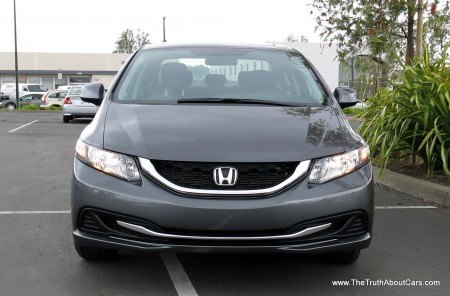Honda Civic Next Up For CVT-ification
Next up on the CVT’s hit list is this Honda Civic. Honda’s Tetsuo Iwamura confirmed that the Civic will get an all-new Earth Dreams powertrain, featuring direct injection and a CVT transmission, within the next couple years.
The re-designed Fit, coming this fall, will get the new technology first, as Honda looks to capture buyers who are interested in fuel economy despite gas prices leveling off in recent months. Iwamura told Automotive News
“Gasoline prices are stabilizing in the mid-$3-a-gallon range, and Detroit is selling quite a few pickups,” Iwamura said. “Yet while the average person sees those numbers, their income hasn’t risen that much. It’s wrong to say Americans don’t care about fuel economy. They care.”
Signs point to a 2015 introduction for the powertrains, as the most recent refresh in 2013 will necessitate another round of tweaks to keep the car competitive.
More by Derek Kreindler


































Comments
Join the conversation
If memory serves, the mid-late 90s Civic HX was among the first production cars to feature a CVT. I vaguely recall an entire Motortrend article devoted to explaining just what the Sam Hill it was. It was also available on the early-2000s jellybean Insight and was standard on CNG Civics of that vintage. Not exactly "next up."
CVTs are awful. But so are automatic Civics. When you have a 3000lb car with 140lbs of torque there isn't a whole lot of fun to be had - unless you opt for a manual. The Japanese are all betting on CVTs - and the europeans (and most domestics) are sticking with 8 and 9 speed convential trannies for the most part. I personally have found the modern ZFs to be better then CVTs. The major advantage is that while they are not continously variable they can switch gears faster - and thus if you want to 'go' they 'go'. Acceleration is all about power put to the ground. So being able to jump to the right gear is more important then sliding over to the perfect gear with regards to driving enjoyment. What you want is a linear response to your pedal press (with an automatic transmission). The ZF comes closer to this then the CVTs - probably because they handle more torque. On the downside the CVT does better on the EPA tests and cost less to manufacture. It's driving pleasure vs. low costs. The europeans like driving pleasure hence they fact that they have the best automated manuals. Its too bad they cost so much.
I recently rented an Elantra for a week and my partner has an i45/Sonata, both with 6 speed auto. Although I have not driven a CVT yet, I think I'd prefer them to an auto with 6+ gears. More gears allow lower rpm at higher speeds than my old 4 speed auto Galant, but I preferred my 4 speed to driving the newer 6 speeds. The only think that really puts me off them is the reliability
Taste will vary. But the reason why auto reviews don't particularly like CVTs is the rubber band effect. If you are cruising along they drift towards the equivalent of sixth gear. But then say you want to floor it. It takes time to get down to the equivalent of 2nd gear. Interestingly during this time period the engine revs high and makes a whole lot of noise but your car doesn't go anywhere. After a while you get up to the speed you wanted and then your car starts accelerating very quickly. So you shoot past where you wanted to go. Much like a rubber band.. Obviously a large capable engine and a modern CVT undoes some of this. The best Nissan CVTs handle the 3.5 liter transverse engines - and they have both planetary gears and a torque converter. So they are pretty close to traditional automatics. But why bother when traditional automatics have gotten so fast and capable. They all have lock up torque converters and now have 8 or 9 gears. On paper CVT seems like the superior technology - but in practice I definetly prefer a traditional auto. Even a 5 speed speed auto works fine hooked up to a large V-8.